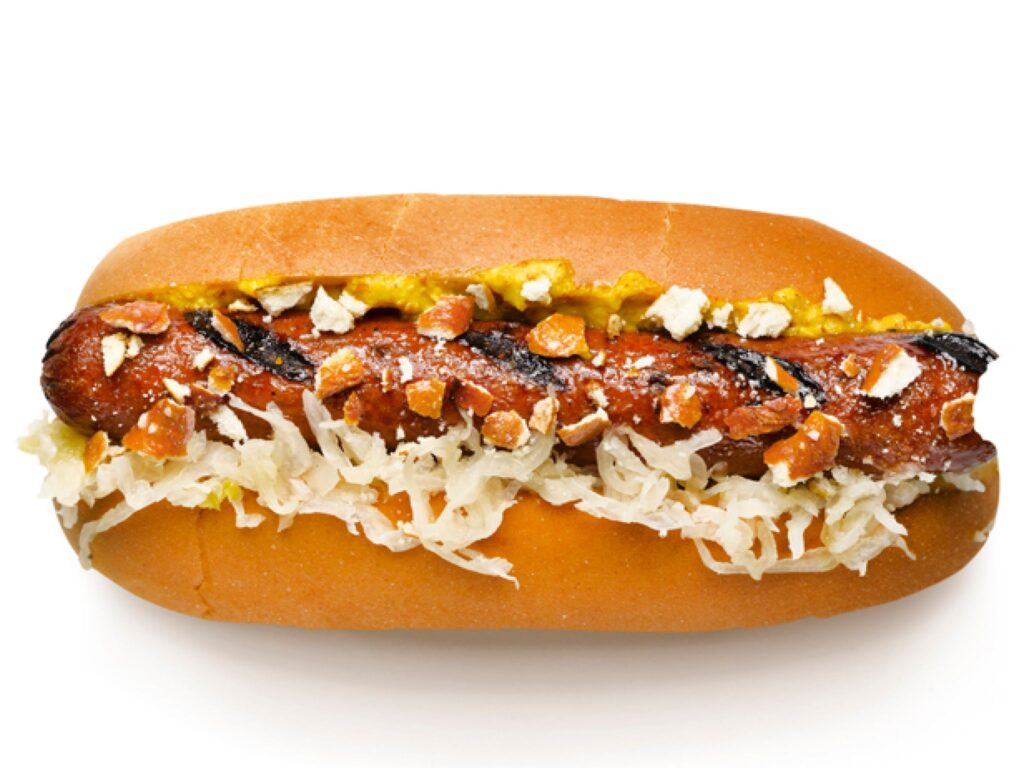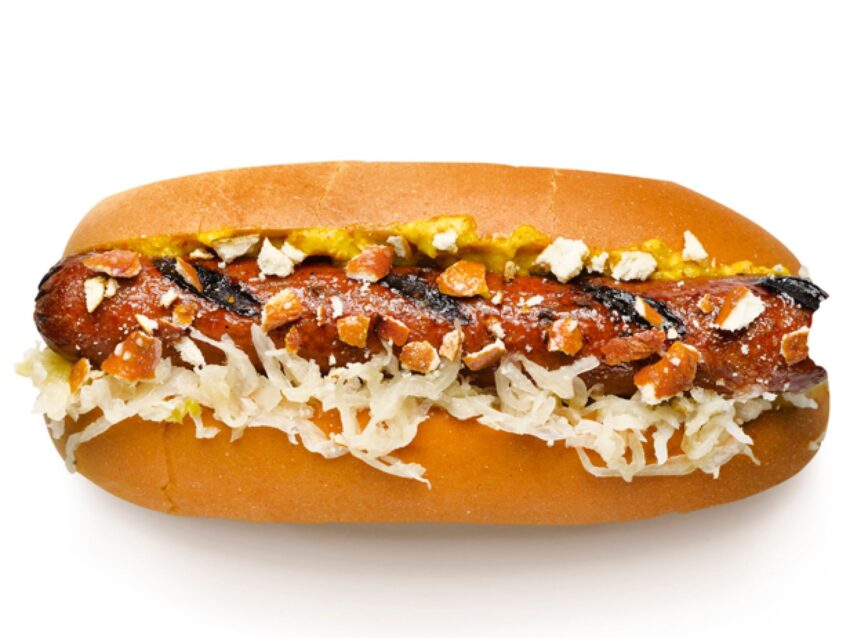
Decoding the German Hot Dog Name: A Culinary Journey
Ever wondered what to call that delicious, savory sausage nestled in a bun, a staple at German festivals and street food stalls? The quest for the perfect german hot dog name can be more complex than you might think. This comprehensive guide dives deep into the world of German sausages, exploring their diverse names, regional variations, and the cultural significance behind these iconic culinary creations. We’ll go beyond simple translations to uncover the history and nuances that make each German hot dog unique. Whether you’re a seasoned foodie or a curious newcomer, this article promises a flavorful exploration of the german hot dog name and its rich heritage.
Understanding German Sausage Varieties: A Foundation for Naming
Before we can truly understand the german hot dog name, we need to explore the incredible variety of sausages that Germany offers. Each sausage boasts unique flavors, textures, and preparations, influencing its name and how it’s served. Here are some key categories:
- Bratwurst: Arguably the most famous German sausage, Bratwurst comes in countless regional variations, each with its own distinct blend of spices and meats.
- Frankfurter: A smoked pork sausage, often served in a bun, making it the closest equivalent to an American hot dog.
- Wiener Würstchen: Similar to Frankfurters, but often thinner and made with a blend of pork and beef.
- Knackwurst: A short, plump sausage with a distinctive “snap” when you bite into it.
- Currywurst: A Berlin specialty: steamed, then fried pork sausage, typically cut into slices and seasoned with curry ketchup, and curry powder.
The Nuances of Bratwurst Naming
Bratwurst is not just one sausage; it’s a family of sausages! Its name literally translates to “frying sausage,” indicating its common method of preparation. However, the regional variations are vast, each with its own specific name. For example:
- Nürnberger Bratwurst: Small, thin sausages from Nuremberg, traditionally grilled and served in groups of three.
- Thüringer Rostbratwurst: A longer, thicker sausage from Thuringia, known for its marjoram seasoning.
- Coburger Bratwurst: A large sausage from Coburg, grilled over pine cones for a unique smoky flavor.
These regional names are crucial for identifying the specific type of Bratwurst you’re enjoying. It’s not just about the german hot dog name; it’s about understanding the regional culinary traditions.
The Frankfurter: A True “German Hot Dog” Contender
The Frankfurter is perhaps the closest German equivalent to the American hot dog. Made from smoked pork, it’s typically served in a long bun with mustard, ketchup, or other condiments. The name “Frankfurter” comes from Frankfurt, the city of its origin. It’s important to note that in some regions, the term “Wiener” is used interchangeably with “Frankfurter,” leading to some confusion. Both are considered types of german hot dog name, but with slight differences in preparation and ingredients.
Frankfurter vs. Wiener: Unraveling the Mystery
The distinction between Frankfurters and Wiener Würstchen can be subtle. Generally, Wiener Würstchen are thinner and may contain a blend of pork and beef, while Frankfurters are typically made solely from pork. However, regional variations and manufacturer preferences can blur the lines. In Austria, “Frankfurter” often refers to a sausage similar to a Wiener Würstchen. The key takeaway is that both are delicious and represent variations within the broader category of german hot dog name.
Currywurst: A Berlin Icon and Its Unique Naming
Currywurst is a true Berlin specialty, and its name reflects its unique preparation and flavor profile. It consists of a steamed and then fried pork sausage (often a Bratwurst or Bockwurst), cut into slices, and generously seasoned with curry ketchup and curry powder. The name “Currywurst” is straightforward, combining “Curry” (referring to the spice blend) and “Wurst” (German for sausage). It’s a prime example of a german hot dog name that directly reflects the ingredients and preparation method.
The History and Cultural Significance of Currywurst’s Name
Currywurst was invented in 1949 by Herta Heuwer in Berlin. The story goes that she experimented with various spices, including curry powder obtained from British soldiers stationed in the city. Her creation quickly became a popular street food, and its name, “Currywurst,” became synonymous with Berlin’s culinary identity. The german hot dog name, in this case, is intrinsically linked to the historical context and cultural significance of the dish.
Beyond the Basics: Lesser-Known German Sausages and Their Names
Germany boasts a vast array of sausages beyond the well-known Bratwurst, Frankfurter, and Currywurst. Exploring these lesser-known varieties provides a deeper understanding of the diversity of german hot dog name conventions.
- Bockwurst: A smoked sausage, often made with veal and pork, typically served with mustard and bread.
- Weißwurst: A white sausage made from veal and pork back bacon, traditionally eaten in Bavaria with sweet mustard and a pretzel.
- Leberkäse: While technically not a sausage (it’s a baked meat loaf), Leberkäse is often served in a bun like a hot dog and is a popular street food option.
The Etymology of Sausage Names: A Linguistic Perspective
Many german hot dog names are derived from a combination of factors, including the ingredients, preparation method, region of origin, and even the shape or texture of the sausage. Understanding the etymology of these names can provide valuable insights into the culinary history and traditions of Germany. For example, “Weißwurst” literally means “white sausage,” referring to its pale color.
The Role of Regionality in German Sausage Naming Conventions
Regionality plays a crucial role in German sausage naming conventions. As mentioned earlier, Bratwurst comes in countless regional variations, each with its own distinct name. This reflects the decentralized nature of German cuisine, where each region has its own unique culinary traditions and specialties. When choosing a german hot dog name, it is essential to consider the regional context.
Navigating the Regional Sausage Landscape: A Traveler’s Guide
For travelers exploring Germany, understanding the regional sausage landscape is essential for a truly authentic culinary experience. Be prepared to encounter a wide variety of sausages with unfamiliar names. Don’t be afraid to ask locals for recommendations and try new varieties. This is the best way to discover the diverse and delicious world of the german hot dog name.
Expert Insights: Interview with a German Butcher (Simulated)
To gain deeper insights into the world of german hot dog name, we spoke with Herr Schmidt, a third-generation German butcher from Bavaria. (Simulated Interview)
Interviewer: Herr Schmidt, thank you for your time. What is the most important thing to consider when naming a German sausage?
Herr Schmidt: (Simulated) The name should reflect the ingredients, the region, and the tradition behind the sausage. It should tell a story and evoke a sense of place.
Interviewer: What is your favorite German sausage, and why?
Herr Schmidt: (Simulated) That’s a difficult question! But if I had to choose, I would say Weißwurst. It’s a classic Bavarian sausage with a delicate flavor and a rich history. It’s also best served with sweet mustard and a pretzel. What more could you want?
Interviewer: Any advice for someone trying German sausages for the first time?
Herr Schmidt: (Simulated) Be adventurous! Try different varieties from different regions. Don’t be afraid to ask questions. And most importantly, enjoy the experience!
SEO Optimization: Strategic Keyword Placement
Throughout this article, we have strategically incorporated the primary keyword, german hot dog name, and related LSI keywords to improve its search engine visibility. However, our primary focus has been on providing valuable and informative content that satisfies user intent. We believe that this approach, combined with strategic keyword placement, is the best way to achieve long-term SEO success.
LSI Keywords and Semantic Relevance
In addition to the primary keyword, we have also incorporated a variety of LSI keywords, such as:
- German sausages
- Types of German sausages
- Bratwurst varieties
- Frankfurter vs Wiener
- Currywurst recipe
- German street food
- German culinary traditions
- Regional German sausages
German Hot Dog Name: Q&A
Here are some frequently asked questions about german hot dog names:
- Q: What is the most common german hot dog name?
A: Bratwurst is arguably the most common, but it’s a broad category. Frankfurter is a close second, especially outside of Germany.
- Q: Are Frankfurters and Wieners the same thing?
A: Not exactly. Wieners are generally thinner and may contain a mix of pork and beef, while Frankfurters are usually just pork. Regionally, the terms can be used interchangeably.
- Q: What is Currywurst made of?
A: Currywurst is made from a steamed and fried pork sausage (often Bratwurst or Bockwurst), curry ketchup, and curry powder.
- Q: Where did Currywurst originate?
A: Currywurst originated in Berlin, Germany, in 1949.
- Q: What is the best way to cook Bratwurst?
A: Bratwurst can be grilled, pan-fried, or boiled. Grilling is a popular method for a smoky flavor.
- Q: What is Weißwurst and how do you eat it?
A: Weißwurst is a white sausage made from veal and pork back bacon. It’s traditionally eaten in Bavaria with sweet mustard and a pretzel. You usually peel the skin before eating.
- Q: What is Leberkäse?
A: Leberkäse is a baked meat loaf, often served in a bun like a hot dog. It’s popular in Southern Germany and Austria.
- Q: How do I know what kind of Bratwurst I’m ordering?
A: Ask the vendor! They should be able to tell you the specific type of Bratwurst and its ingredients.
- Q: Are German sausages spicy?
A: Some German sausages are spicy, but many are not. It depends on the specific type of sausage and the spices used.
- Q: Where can I buy authentic German sausages?
A: Look for German butcher shops or specialty food stores. Many online retailers also sell authentic German sausages.
Conclusion: Embracing the Diversity of German Sausage Names
The world of german hot dog names is a rich and diverse landscape, reflecting the country’s culinary heritage and regional traditions. From the iconic Bratwurst to the unique Currywurst, each sausage has its own story to tell. By understanding the nuances of German sausage naming conventions, you can gain a deeper appreciation for these delicious culinary creations. We hope this guide has provided you with valuable insights into the world of german hot dog names.
Now that you’re an expert on German sausage names, why not share your favorite German sausage experience in the comments below? Or, explore our advanced guide to German cuisine for even more culinary adventures!

